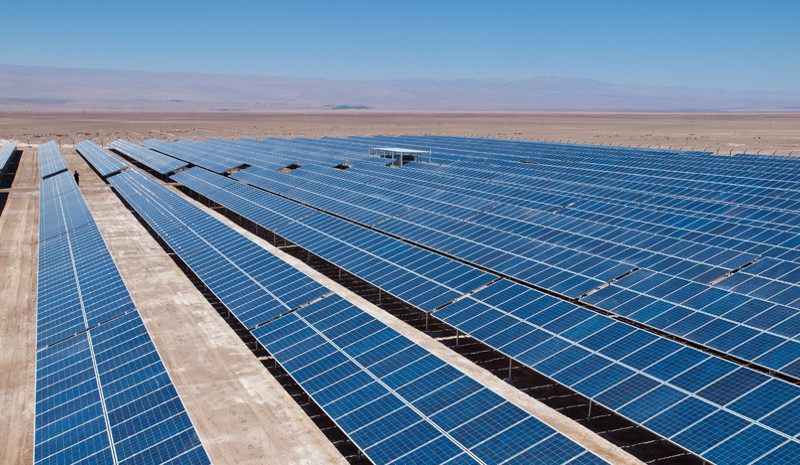The latest report by the U.S. Energy Information Administration (EIA) gives U.S. large-scale solar a fleet wide average DC-AC ratio of 1.25. This is based on 20.3 GW in alternating current (AC) of installed solar power installed as of the end of 2016, with the direct current (DC) rating of these plants at 25.4 GW-DC.
The data that drove this report is from Form EIA-860, filed in 2016.
While the U.S. average ratio for utility scale plants with capacities greater than one MW-AC seems to have settled just above 1.25, there is small batch of plants near the higher end that has pushed the 75th percentile up above a ratio of 1.35.

Of specific note in the 2016 data, were three 74.5 MW-AC power plants built by Florida Power and Light (FPL) – owned by NextEra – that have a DC-AC ratio of 1.7. Two of these high DC-AC ratio plants are now accompanied by energy storage systems.
The Citrus Solar Energy Center in Desoto, Florida, has 4MW/16MWh ‘DC-coupled’ energy storage system installed on the site to store the clipped solar electricity and distributed it at a later time. The Babcock Solar Farm is the nation’s current largest operational solar+storage power plant – with at 10MW/40MWh energy storage system complementing the 74.5 MW-AC/126MW-DC solar power system. This plant feeds the Babock Ranch, an eco development in Florida.
These two plants are part of a larger family of 74.5 MW-AC solar power plants that FPL is building across the state.
Generally, larger and newer solar plants have had a higher average DC-AC ratio. 2016 saw the largest variance, by far, in DC-AC ratio as the industry expanded by 100% over 2015 volume deployed.
This content is protected by copyright and may not be reused. If you want to cooperate with us and would like to reuse some of our content, please contact: editors@pv-magazine.com.









By submitting this form you agree to pv magazine using your data for the purposes of publishing your comment.
Your personal data will only be disclosed or otherwise transmitted to third parties for the purposes of spam filtering or if this is necessary for technical maintenance of the website. Any other transfer to third parties will not take place unless this is justified on the basis of applicable data protection regulations or if pv magazine is legally obliged to do so.
You may revoke this consent at any time with effect for the future, in which case your personal data will be deleted immediately. Otherwise, your data will be deleted if pv magazine has processed your request or the purpose of data storage is fulfilled.
Further information on data privacy can be found in our Data Protection Policy.